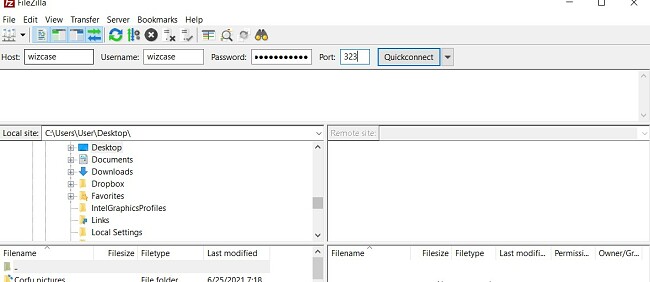
Node.js, a framework and language that allows you quickly to create web servers. It makes it easier to manage server resources efficiently, but still keeps your applications simple. It's a great way of saving money on your infrastructure. In fact, many companies are moving over to Node.js because it's cheaper than Java.
Node.js does not only work for web apps. It can also be used to orchestrate tasks. A web server is not required to deploy a Twitter Bot. But, you must make sure you have an HTTP server. You can do this by using the npm command. This will create a proxy server for your application, and connect any necessary services.
JavaScript is not as popular as other scripting languages, even though it has been around for quite some time. There are several reasons, including its slowness as well as the lack of a type system. However, it's a great candidate for a new kind of Web API. The code can be easily shared between clients and servers.

A web server will usually accept a request and handle it in the typical web page mode. Then, it will return an HTML response. Depending on the quality of the client hardware, this can take anywhere from a few seconds to several minutes. A web server will be required to create a fancy application. Node is one the best options.
Another thing Node excels in is asynchronous programming. Instead of wasting resources creating a new thread for each request, callback functions can be used to handle all user requests on one thread.
Node's best feature is its event loop. The server will invoke a function when an event is detected. This will allow your code run. This function can be called manually or it can be called automatically. However, due to its asynchronous nature the function will only be called after you are finished.
Another feature is the ES6 module loader, which will automatically load modules into your browser's module list. This is a great feature to have if Node is used in a browser.

Finally, nodejs can be made async with the libuv library. You can use libuv to create a node-based web server, an REST API or a simple HTTP proxy. Libuv adds event handling in Node to C++. This is especially important for those who work with many servers or clients.
While it may seem daunting, you'll soon understand why Node.js is so popular. It can cut down your infrastructure costs by as much as 2000%. It can help you be more productive at both the front and back end of your web application by providing networking support and event handling capabilities.
FAQ
Can I use HTML & CCS to build my website?
Yes! If you've followed the steps, you should now be able create your website.
You now know how to build a website structure. Now you need to learn HTML and CSS coding.
HTML stands as HyperText Markup Language. Think of it like writing a recipe for a dish. It would include ingredients, instructions, as well as directions. HTML is a way to tell a computer which parts are bold, underlined, italicized or linked to other parts of the document. It's the language that documents use.
CSS stands for Cascading Style sheets. You can think of CSS as a style sheet for recipes. Instead of listing out each ingredient and instruction, you write down general rules for things like font sizes, colors, spacing, and more.
HTML tells a browser how to format a webpage; CSS tells a browser how to do it.
Don't worry if you don't know the meaning of either one of these terms. Follow these steps to make beautiful websites.
What technical skills do I need to design and construct my site?
No. All you need to understand HTML and CSS. Online tutorials can be found that cover both HTML and CSS.
Can I use a template or framework on my website?
Yes! Many people use pre-built templates or frameworks when creating a website. These templates contain all the code needed to display information on your page.
These are some of the most requested templates:
WordPress – One of the most well-known CMSes
Joomla - Joomla is another popular open-source CMS
Drupal - An enterprise-level solution for large companies
Expression Engine - Yahoo's proprietary CMS
Hundreds of templates are available for each platform, so finding the right one should be easy.
What is a static site?
A static website can be hosted anywhere, including GitHub Pages, Amazon S3, Google Cloud Storage, Windows Azure Blob storage, Rackspace Cloud Files, Dreamhost, Media Temple, and others. A static site can be deployed to any platform that supports PHP. This includes WordPress, Drupal Joomla! Magento PrestaShop, Magento and Joomla!
Static web pages can be easier to maintain as they don’t need to send requests back and forward between servers. Also, they load faster because there's no need to send any requests back and forth between servers. Static web pages are better for small businesses that don't have enough resources or the time to maintain a website.
Statistics
- It's estimated that in 2022, over 2.14 billion people will purchase goods and services online. (wix.com)
- The average website user will read about 20% of the text on any given page, so it's crucial to entice them with an appropriate vibe. (websitebuilderexpert.com)
- It enables you to sell your music directly on your website and keep 100% of the profits. (wix.com)
- It's estimated that chatbots could reduce this by 30%. Gone are the days when chatbots were mere gimmicks – now, they're becoming ever more essential to customer-facing services. (websitebuilderexpert.com)
- Did you know videos can boost organic search traffic to your website by 157%? (wix.com)
External Links
How To
How to use WordPress for Web Design
WordPress is a free software program that can be used to create websites and blogs. The main features include easy installation, powerful theme options, plug-ins, and many others. This website builder allows you to customize your site according to your preferences. It includes hundreds of themes, plugins, and other tools that can be used to create any type of website. If you wish, you can add your domain name. All these tools enable you to manage your site's appearance and functionality effortlessly.
WordPress allows you to create beautiful websites even if you don't know how to code HTML. If you don't know anything about coding, there's no reason why you shouldn't be able to set up a professional-looking website in minutes! This tutorial will show you how to install WordPress and walk you through the basic steps to create your blog. We'll explain everything so you can follow along at home.
The most popular CMS (Content Management System) out there is WordPress.com currently has around 25 million users worldwide and counting. There are two versions of WordPress. You can choose to either buy a license at $29 per month, or download the source code and host your site for free.
WordPress is an excellent blogging platform for many reasons. WordPress is simple to use. Anyone can create great-looking websites by learning HTML. You also have the flexibility to change your site's look and feel. WordPress.org allows you to modify the look and feel of any site with many themes at no cost. It's also very customizable. Many developers offer premium add-ons that allow you to automatically update posts when someone comments on them or integrate social media sharing into your site.